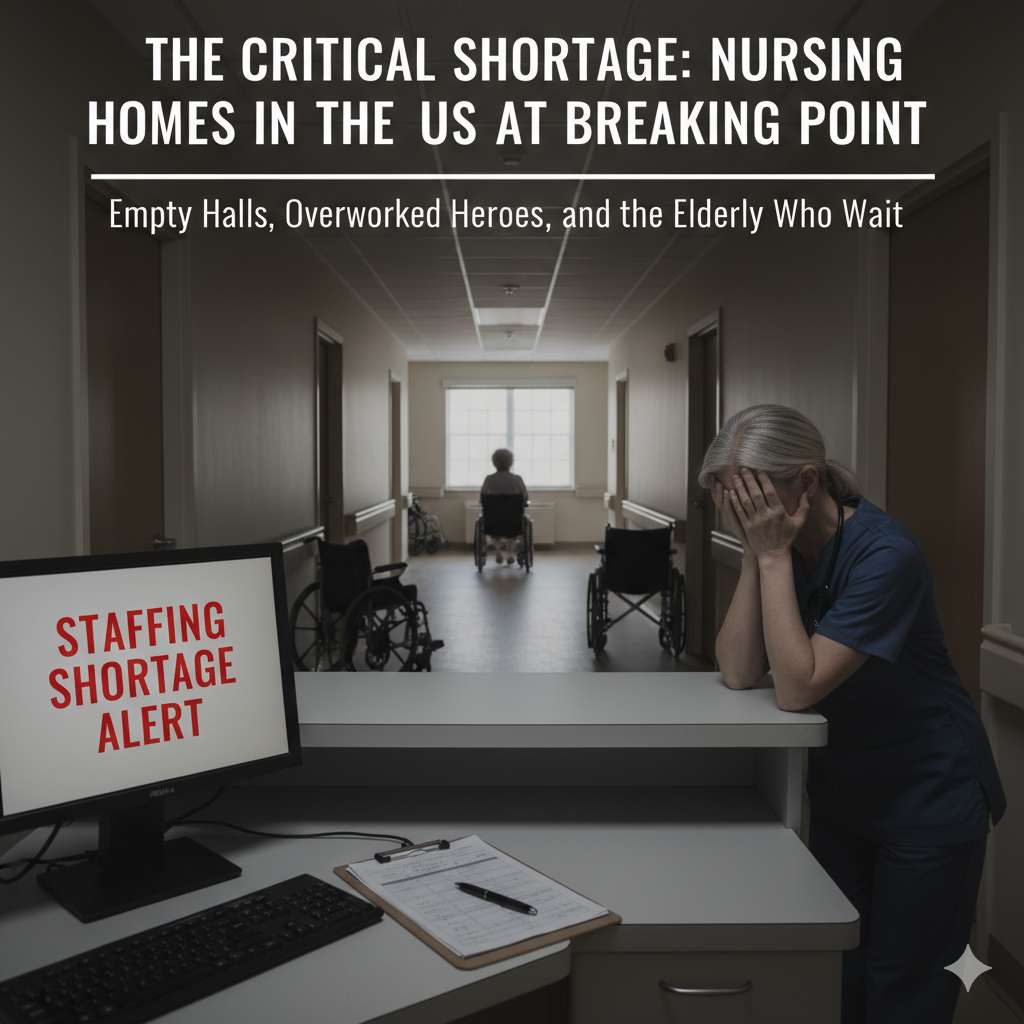Addressing the Workforce and Staffing Crisis in Nursing Homes
Introduction
The U.S. nursing home sector is facing an unprecedented workforce and staffing crisis. With 99% of facilities reporting open positions and a 7.6% decline in workforce since 2020, nursing homes struggle to maintain mandated staff-to-resident ratios. High turnover, soaring agency staff costs, and widespread burnout are directly eroding quality of care. In this post, we explore the scope and drivers of the crisis, its operational impacts, competitive insights and content gaps, practical solutions, real-world case studies, SEO and engagement tactics, and answer frequently asked questions.
Nursing Home Staffing Crisis: Scope and Causes
Workforce Shortages and Turnover
- Nursing home workforce down 7.6% since February 2020, even as other sectors recover
- Projected RN shortfall of 78,610 to 450,000 by 2025 across care settings
- Replacement cost per RN often exceeds $60,000, fueling high financial loss
Drivers of the Crisis
- Aging workforce and retirements: Large cohorts of RNs and CNAs nearing retirement age
- Burnout and overtime demands: Nearly every facility relies on mandatory overtime, intensifying fatigue
- Education pipeline bottlenecks: Limited clinical placements and faculty shortages slow LPN/RN graduations
- Low pay and competition: Hospitals and outpatient centers lure staff with higher wages and benefits
Reliance on Agency Staff
- Nearly 70% of nursing homes hire agency nurses or travel CNAs to fill shifts
- Agency rates can be 2–3× permanent staff wages, straining operating margins
- Overdependence on temporary workers disrupts continuity of care and team cohesion
Impacts on Quality of Care and Operations
Resident Outcomes and Safety
- 94% of facilities fail to meet at least one federally mandated staff-to-resident ratio
- Higher risk of falls, pressure injuries, infections, and medication errors under understaffing
- Staff churn reduces accountability and hampers person-centered care
Access and Admissions
- 50–58% of homes are limiting or freezing new admissions due to staffing gaps
- Hospital discharge backlogs increase, raising healthcare system costs and patient risk
- Vulnerable residents face delayed transitions to long-term care
Financial Strain
- Soaring agency expenses eat into operating budgets, forcing trade-offs in supplies and programs
- Permanent hiring freezes and benefit cuts undermine morale and retention
- Deferred maintenance and service reductions jeopardize regulatory compliance
Competitive Insights and Content Gaps
Current content excels at national surveys, policy briefs, and press releases, but misses critical areas:
- Cost-benefit analyses comparing turnover losses vs. retention investments
- First-hand accounts from RNs, LPNs, CNAs on burnout and career challenges
- Step-by-step guides for achieving and sustaining staffing-ratio compliance
- Mental-health support frameworks and burnout-prevention programs
- Financial models detailing agency-staff expense impacts on margins
- Technology-driven solutions like e-scheduling, predictive analytics, and telehealth
Filling these gaps with humanized narratives, granular data, and implementation blueprints will differentiate your content and address quality-of-care outcomes directly.
Solutions to the Nursing Home Staffing Crisis
Recruitment and Retention Strategies
- Partner with local community colleges and vocational schools to create direct pipelines
- Offer career ladders with tuition reimbursement for CNAs to become LPNs/RNs
- Implement sign-on bonuses, retention stipends, and flexible shift incentives
Mental-Health and Well-Being Programs
- Launch burnout-prevention workshops and regular peer support groups
- Provide onsite counseling, stress-management training, and resilience coaching
- Schedule mandatory rest periods and limit excessive overtime
Technology-Driven Staffing Models
- Use e-scheduling platforms to optimize shift coverage and minimize last-minute gaps
- Apply predictive analytics to forecast demand spikes (e.g., flu seasons, holidays)
- Integrate telehealth supervision so RNs can oversee multiple units safely
Policy and Advocacy
- Engage lawmakers on realistic federal staffing mandates tied to workforce supply forecasts
- Secure state-level training grants and pilot programs for career advancement
- Adopt a QAPI (Quality Assurance and Performance Improvement) framework for continuous monitoring
Case Studies: Successful Mitigation Tactics
- Quality Insights Program: Leveraged data analytics to identify turnover hotspots, yielding a 20% boost in six-month retention
- CareerStaff Managed-Service Model: Centralized hiring and credentialing to stabilize staffing and reduce agency fees by 15%
- Cross-Training & Telehealth Bonuses: A Midwest facility cross-trained LPNs/CNAs and introduced telehealth RN check-ins, cutting overtime hours by 25%
SEO and Engagement Features
- Primary keywords in headings: “nursing home staffing crisis,” “nursing shortage in long-term care”
- Long-tail optimization: “Solutions to nursing home staffing crisis,” “Cost of agency staff in nursing homes”
- Infographic: National vs. facility-level vacancy rate comparison
- Downloadable assets: Staffing-ratio compliance checklist, turnover cost calculator
- Schema-enabled FAQ: Boosts visibility in “People Also Ask” and rich results
Frequently Asked Questions
- What is causing the staffing crisis in nursing homes?
- How does the nursing shortage affect patient care?
- What are the best strategies to retain nursing home staff?
- How much does it cost to replace a nurse in a nursing home?
- What technology solutions can improve staffing levels?
Conclusion
The nursing home staffing crisis demands immediate, multifaceted action. By combining data-driven insights, human-centered support programs, cutting-edge technology, and targeted policy advocacy, facilities can mitigate turnover, control costs, and—most importantly—safeguard the health and dignity of residents. Download our compliance checklist and implementation guide to begin driving meaningful change today.

